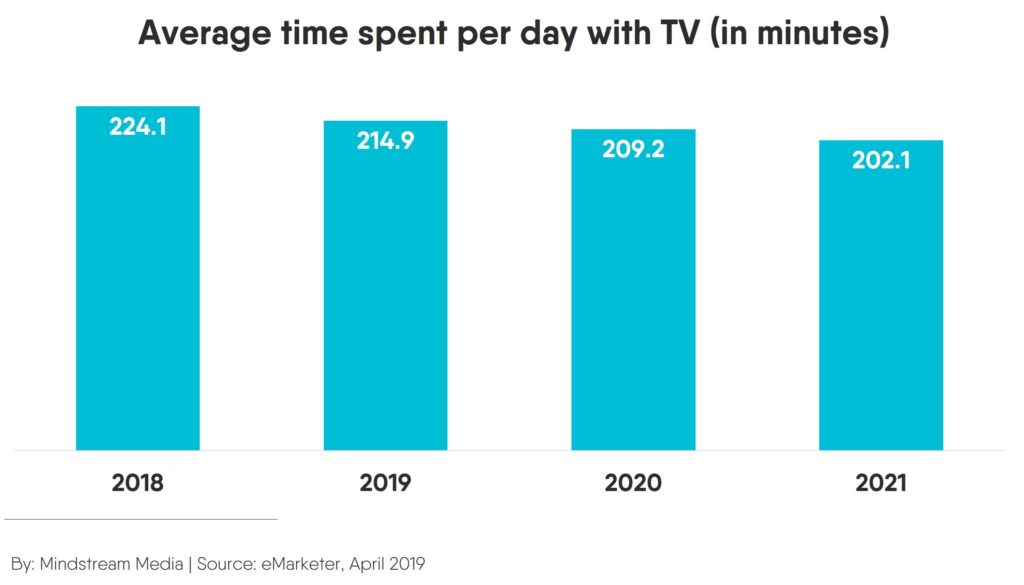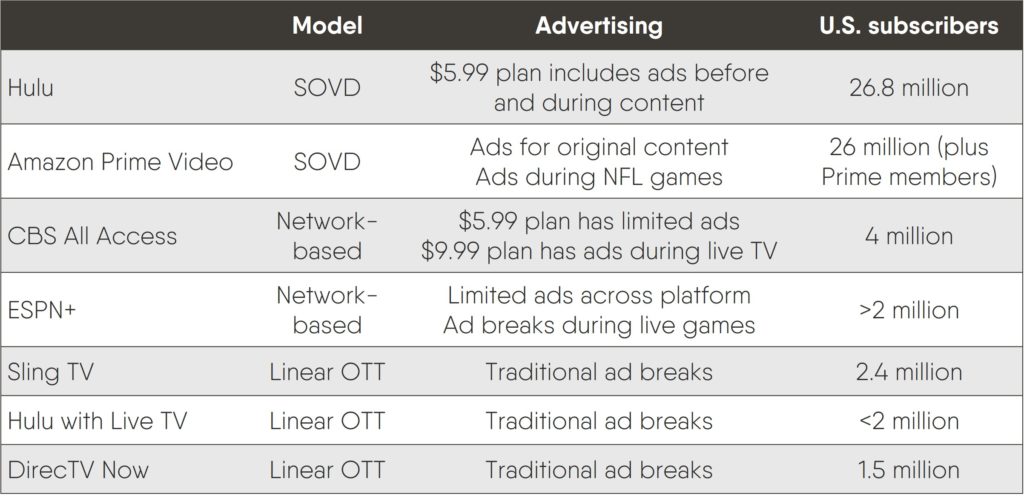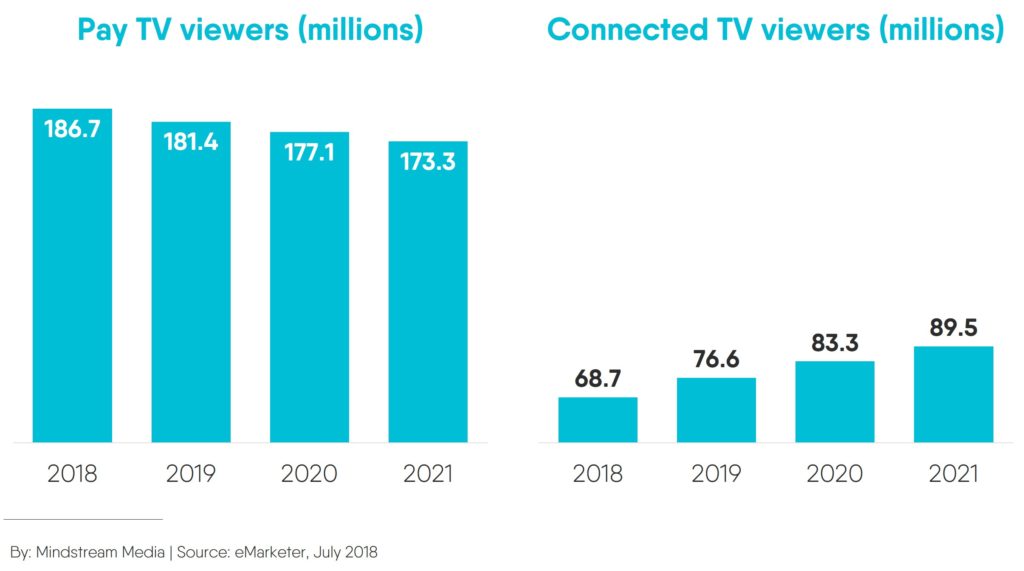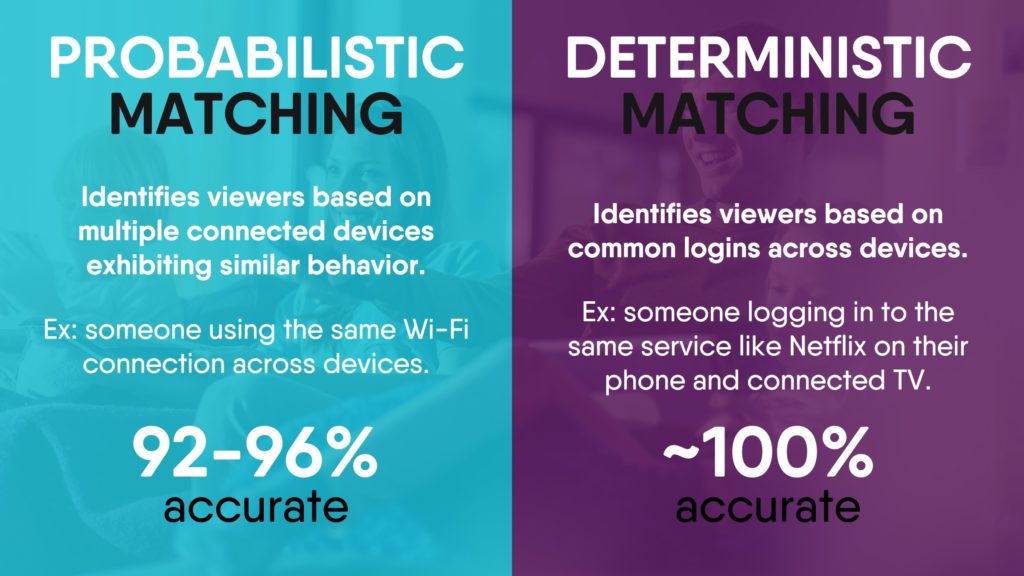Recapping Our Connected TV Series: Top Takeaways for Marketers
There’s no denying it, connected TV is here to stay. With its mass appeal and innovative advertising capabilities, it’s important for marketers to get familiar with the power of connected TV. But, between confusing acronyms (OTT, SVOD, MVPD, etc.) and unfamiliar terms (cord-cutter, cord-trimmer, cord-never, etc.), the connected TV landscape can get pretty confusing.
Recently, we published a series of blog posts jam-packed with information that marketers should know about connected TV. If you haven’t had a chance to read them all, here’s a look at the highlights to get you up to speed.
Connected TV Terminology
Let’s start this recap with a quick look at a few connected TV definitions to clear up those confusing acronyms and unfamiliar terms.
Connected TVs: The devices that host apps and services that provide streaming video content via the internet (e.g., smart TVs, streaming boxes/sticks, gaming consoles, etc.).
Over-the-top (OTT) services: The apps and websites that provide streaming video content over the internet and bypasses traditional distribution (e.g., HBO Now, Hulu, Netflix and YouTube).
Subscription video-on-demand (SVOD) model: OTT services that give users access to a wide range of original and aggregated content for a monthly rate (e.g., Netflix, Hulu, Amazon).
Network-based OTT model: SVOD services built around TV and cable networks (e.g., HBO GO/NOW, Showtime Anytime, CBS All Access).
Linear OTT model: OTT services that deliver content from multiple TV, cable or satellite channels in real time (e.g., DirecTV Now, Hulu with Live TV, Sling TV).
Linear TV: Traditional TV providers made up of over-the-air, cable and satellite services.
Cord-cutter: Someone who once had, but then canceled, a linear TV service.
Cord-trimmer: Someone who cut back on linear TV services but still subscribes.
Cord-never: Someone who never subscribed to a linear TV service in the first place.
The evolution of TV viewership
In the first post in our connected TV series, we looked at how linear TV viewership is holding its own even as more people shift to digital subscriptions and why it’s still a significant media channel for advertisers.
Key takeaways for marketers
No. 1: Thanks to its massive – albeit inefficient – reach and ability to create emotional connections, traditional TV continues to be a powerful top-of-the-funnel medium.
No. 2: Linear TV is especially useful for B2C brands and national product launches.
Key stat
U.S. adults watch an average of 3 hours and 45 minutes of TV every day.

Connected TV players
In the second post of our series, we looked at the players involved in connected TV. Specifically, we examined connected TV’s rapidly expanding audience, today’s major OTT providers and the main devices viewers use to watch these services.
Key takeaways for marketers
No. 1: While traditional TV audiences still far outpace connected TV viewers, the gap is starting to close.
No. 2: There is a lot of overlap between traditional and connected TV audience, but the number of cordless viewers is growing.
No. 3: Many OTT services (including the one with the most viewers – Netflix) don’t show ads. But, there is no shortage of major OTT players and lesser-known services that serve ads.

Key stat
Connected TV viewers will increase by more than 30 percent between 2018 and 2021; during that same period, pay TV viewership is expected to decline by about 7 percent.

Connected TV advertising
Our third post focused on the advertising option available to marketers via connected TV. The post examined cross-device matching which allows marketers to serve ads to specific viewers rather than purchasing ad space based on a TV program’s assumed audience.
Key takeaways for marketers
No. 1: Cross-device matching uses digital footprints on computers, smartphones, tablets and connected TVs to identify specific audience members and serve them ads across those devices.
No. 2: The ability to serve ads to specific viewers is huge for marketers. Rather than hoping to find your target audience based on what shows you hope they’re watching, you can leverage a variety of more specific targeting methods like:
- Addressable: Targeting consumers based on their home or business address and using geo-fences to serve ads.
- Behavioral: Targeting consumers based on the behavioral and intent-based signals they display online (e.g., the websites they visit, the content they consume, etc.).
- Demographics: Targeting consumers based on demographic data from reliable sources like household census, warranty registrations, questionnaires, purchase histories, etc. You can then layer this on top of behavioral targeting to hone in on very specific audiences.
Key stat
There are two primary methods for identifying specific viewers with cross-device matching, each with match rates above 90 percent.

Ready to harness the power of connected TV to promote your brand? Contact Mindstream Media Group to learn how we can help.
More from Mindstream Media Group

Meet the Mindstreamer – Chandler Swanner
Chandler Swanner’s interest in advertising dates back to her childhood. Her mother (and role model in life) was a Media […]

Third-Party Cookie Phase-Out: What Marketers Need to Know
Cookies are an essential part of internet usage, allowing websites to remember you and provide a more personalized experience. This […]

Meet the Mindstreamer – Kaya Bucarile
She plans and oversees media strategy for agency clients, working closely with project and platform managers to ensure that we […]
